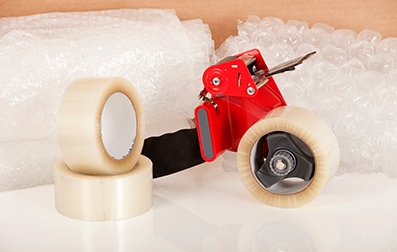"We care" about you and your stored items.
Packing, thankfully, isn’t something you do every day. So that means you probably have a few questions. Over the years we’ve heard a lot of advice about packing and storing, and we’ve posted the best of it for you here.
Start with the box.
Use only quality storage boxes and take care to fill them to their capacity – over-filled or under-filled boxes may cave-in or break apart. Try to evenly distribute weight, placing lighter objects in larger boxes, and heavier items in smaller boxes. For clothes, consider using a wardrobe box, which allows you to store your clothes on hangers.
Know what’s where.
Carefully label each box for easy reference. If you’re storing a large number of items, number each item and create a full inventory for your home records – that will save you unnecessary trips to the storage unit to look "for that…thing."
Wrap it up.
Be sure to protect all your fragile items by wrapping them in either paper or bubble wrap before storing them. When placing in the box, create as tight fits as possible to prevent shifting of the items. Larger items such as tables and cabinets should be wrapped with storage blankets, and specialty items such as mirrors and framed pictures should be placed in mirror boxes. Empty any perishable items from drawers before wrapping them up. Store strategically.
Once you’ve packed things up and shipped it all to the storage unit, take a moment to strategically plan what goes where. Large, heavy or bulky items should be placed in the unit first. If you plan on taking some items out before others, place them in the front and rear of the unit respectively. Stack smaller/lighter items on top of larger/heavier ones. Take care to consider the effects of time on your storage – for example don’t stack heavy items on forgiving surfaces such as cushions or mattresses.

Finishing touches
- Add protective coverings and dust sheets to furniture, stereo units, and other appropriate items.
- Purchase renters insurance or find out if your home owners or renters insurance will cover your stored items.
- Make sure you have the right size unit for your needs and allow for space between walls and ceiling for ventilation.
- Use wooden pallets to keep items off the floor.
- Consider unattached shelving for organization.
- Place items up front that you will need to access more frequently.
- If possible store couches on end and stack chairs seat to seat.
- Use a good wood polish on your furniture and use blankets, sheets or moving pad to protect items.
- Make sure appliances are clean and dry, store slightly open and use the inside of appliances to store light items.
- Store paintings and mirrors on end, use bubble wrap, or packing paper for all breakables and pack boxes tightly.
- Grease, drain and clean all outdoor equipment, metal tools, and recreational items.
- Check on your unit frequently. If going out of state or country have someone named as emergency contact and make sure someone you trust has a key and the code to the gate, ask that they check your unit frequently.
- Make sure your lease agreement reflects the names, addresses and phone numbers of all such people. Report any suspicious activity, malfunctioning equipment, signs of damage or pests to the rental office.
- Make sure you have your access code/keys/storage unit numbers. Shut the lights out and lock the door.

